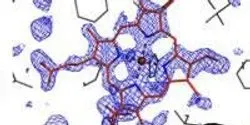Big Data

Big data might bring more benefits to drug discovery than to any other field. For one thing, discovering a new drug turns out to be incredibly difficult. On average, a pharmaceutical company tries about 10,000 drug candidates for every one that ends up on the market. Plus, the process of discovering and developing a new drug costs hundreds of millions of dollars and takes more than a decade—some say more for both measurements.

A pair of genetics researchers at Iowa State University found striking patterns in the building blocks of DNA in a wide variety of species, according to their recently published paper.

Big data is the current hot buzzword in data analysis. Laboratory managers helming such a project don’t necessarily require the expertise to directly implement a big data project, but it is advisable that they have a general understanding of the process to be able to set realistic goals and timetables.

The University of Dundee is to lead a major project to help tackle one of four key biosciences `big data’ challenges identified by the UK’s Biotechnology and Biological Sciences Research Council.

Clemson University researchers Alex Feltus and Kuang-Ching Wang are part of a team of scientists that received a $1.4 million grant from the National Science Foundation (NSF) to help meet the growing needs of the data-driven genomic science community.

Its name is Rivanna, and it’s the University of Virginia’s new $2.4 million Cray computing cluster, a high-performance machine – really a combination of linked high-power computers (hence, “cluster”) – designed to greatly enhance and establish computationally intensive and data-intensive research at the University.













